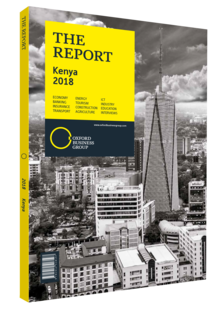Silvester Kasuku, Director-General and CEO, Lamu Port: Southern Sudan-Ethiopia Transport (LAPSSET) Corridor: Interview

Interview: Silvester Kasuku
How do you expect the LAPSSET corridor to affect investment and economic activity in Kenya?
SILVESTER KASUKU: The LAPSSET corridor is a large-scale infrastructure programme envisaging the development of Lamu Port, in addition to the construction of major new infrastructure supported by special economic zones and industrial centres. The first three port terminals are under construction and will be operative by the end of 2020. Along with the port itself, the corridor will include a range of facilities, including resort cities, international airports and refineries. Enhancing transportation is a fundamental pillar of the initiative, which entails the construction of international highway and railway networks connecting Kenya, Ethiopia and South Sudan. In addition, a crude oil pipeline is being designed and will be operative by 2021.
The LAPSSET project is expected to boost Kenya’s GDP by at least 2-3%. However, the fact that the corridor will cross 70% of the country, coupled with current investment expectations, could increase this figure to 5%. The new crude oil pipeline is expected to match the entire revenue currently generated by the Kenyan oil industry. The special economic zones and new international supply chains, supported by local raw materials, such as tea and coffee, will strengthen value-added manufacturing and industrial activity.
Which industries do you expect would gain the most from the development of the project?
KASUKU: The LAPSSET project targets a broad array of sectors, including oil and gas, power generation, industrial equipment, food and beverages, construction materials, and agro-industry. The African continent is approaching the Fourth Industrial Revolution (4IR), which is driven by emergent technologies.
Infrastructure projects like the LAPSSET corridor aim to prime not only Kenya, but the whole region for the impact of these changes. The programme will forge linkages that strengthen regional integration and create the new basis needed for economic growth. For example, the road connecting Kenya, Ethiopia and South Sudan – which will be completed by 2020 – will generate a positive economic synergy between the countries. The project constitutes the greatest land bridge ever planned on the continent, serving as a link to the Belt and Road Initiative and spreading the impact of the 4IR all over Africa.
What are some solutions that could improve regional integration on the continent?
KASUKU: Under the umbrella of the African Union, African leaders have come up with the Programme for Infrastructure Development in Africa. The plan envisages the construction of approximately 37,200 km of highways, 30,200 km of railway and 1.3bn tonnes of added throughput capacity. Projects in line with this vision, such as the LAPSSET corridor, and free trade agreements, contribute to African integration, bringing opportunities and reducing regional tensions.
How are foreign investors involved in the development of the LAPSSET corridor?
KASUKU: Our first line of engagement with investors comes through the construction of the first three terminals in Lamu Port. The additional seven terminals will be subject to concessions to the private sector, both in terms of construction and operation.
Oil and gas projects are also a major driver of investment. The upstream segment is already developed and we are now tackling midstream operations with the construction of the pipeline to transport crude oil to Lamu Port for export. In line with our infrastructure plans, investors are also focused on the development of refineries. As Africa in general – and Kenya in particular – continues to exploit oil and gas fields, it is the time to consider establishing petrochemical facilities. Lamu Port will serve as a point of reference in the development of this industry at the continental level.
You have reached the limit of premium articles you can view for free.
Choose from the options below to purchase print or digital editions of our Reports. You can also purchase a website subscription giving you unlimited access to all of our Reports online for 12 months.
If you have already purchased this Report or have a website subscription, please login to continue.

